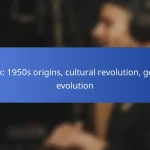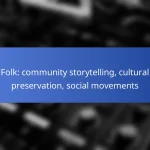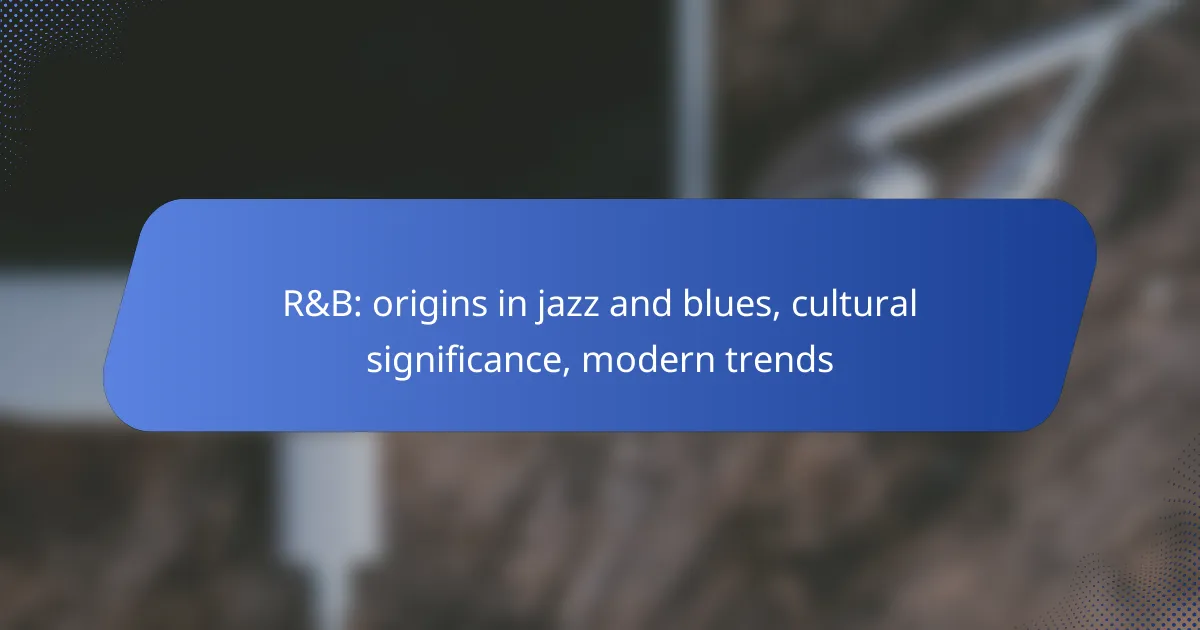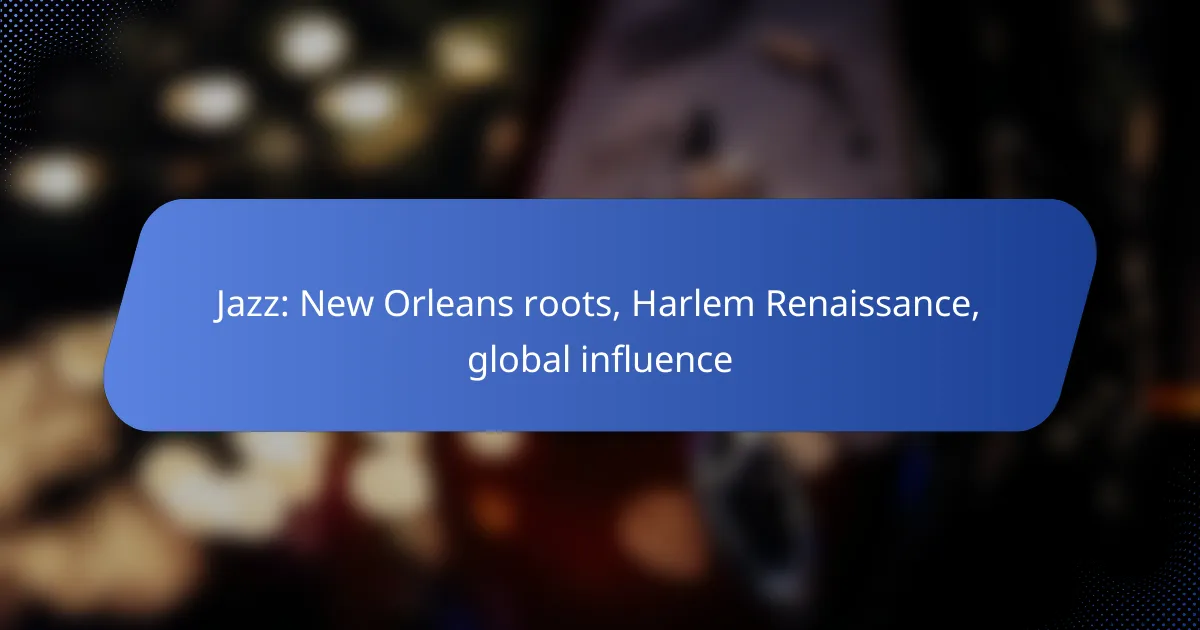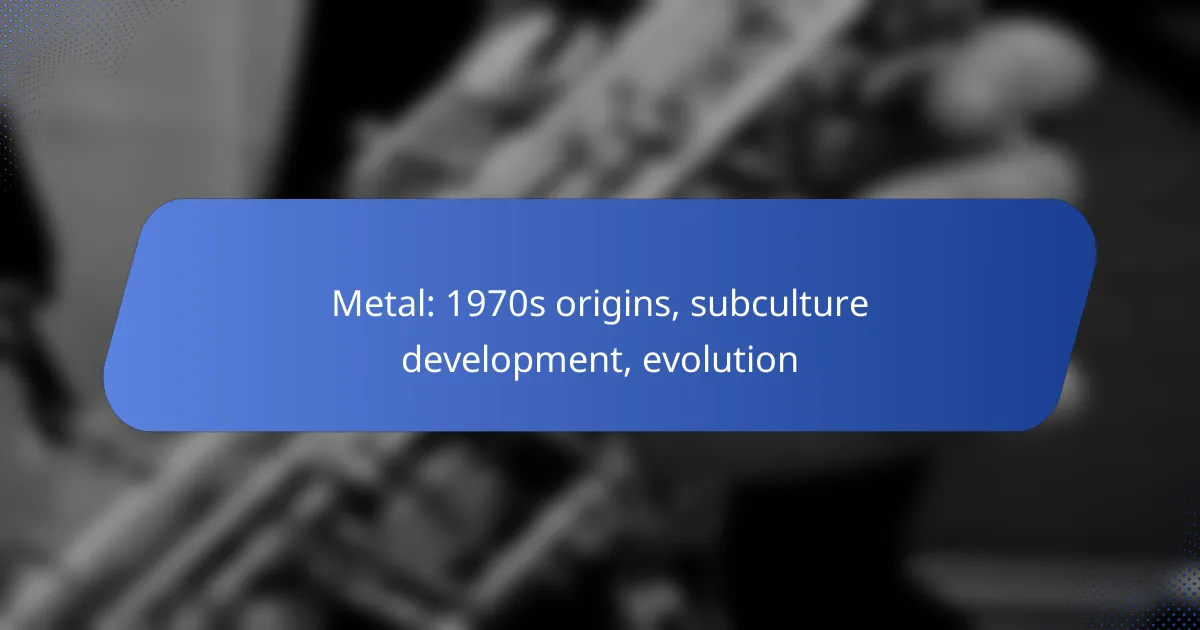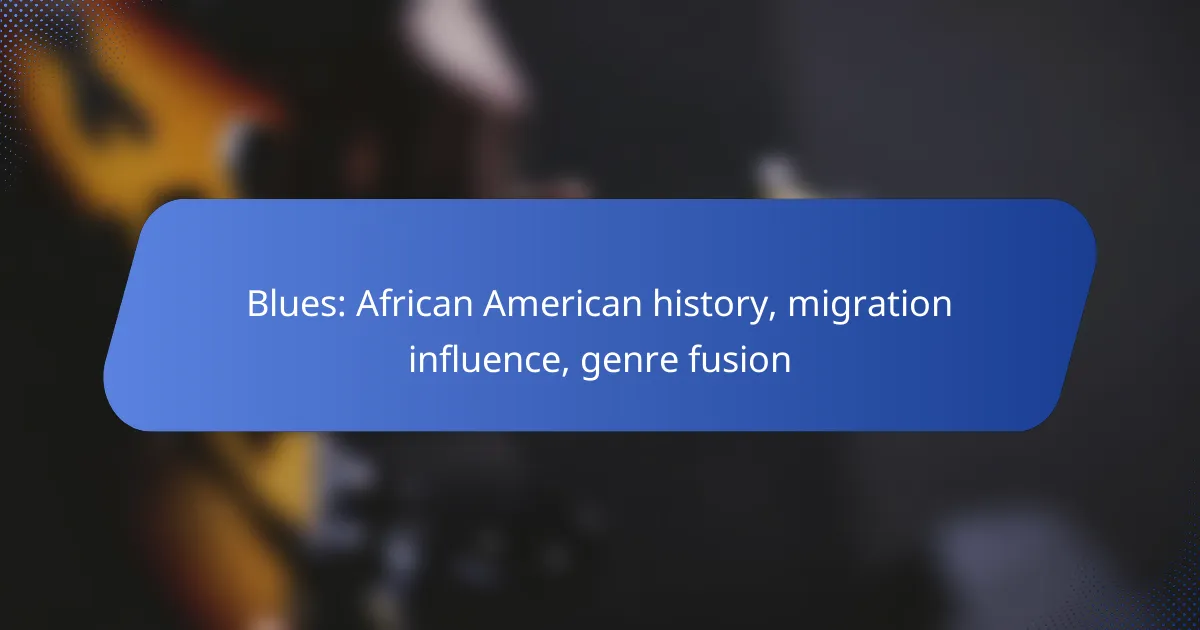R&B originated from jazz and blues, blending their rhythmic and melodic elements to create a distinct sound that emphasizes emotional expression. Emerging in the mid-20th century, this genre reflects the cultural experiences of African Americans and has evolved through various musical influences. Today, modern R&B showcases a fusion of traditional styles and contemporary trends, including neo-soul and hip-hop, highlighting its ongoing relevance and emotional depth.

How did R&B originate from jazz and blues?
R&B originated from jazz and blues by blending their rhythmic and melodic elements to create a distinct sound that emphasizes emotional expression. This genre emerged in the mid-20th century, reflecting the cultural experiences of African Americans and evolving through various musical influences.
Influence of jazz on R&B
Jazz significantly influenced R&B through its complex rhythms and improvisational style. The incorporation of jazz elements, such as syncopation and swing, added a lively energy to R&B music, making it more appealing for dance and social gatherings.
Artists began to adopt jazz instrumentation, including brass and woodwind instruments, which enriched the overall sound of R&B. This fusion allowed for greater musical experimentation and paved the way for future genres, such as funk and soul.
Role of blues in shaping R&B
Blues played a crucial role in the development of R&B by providing a foundation of emotional storytelling and expressive vocal techniques. The use of the twelve-bar blues structure became a staple in R&B, allowing artists to convey deep feelings and personal narratives.
The themes of love, heartache, and resilience found in blues music resonated with R&B artists, who often drew from these experiences to create relatable songs. This connection to the blues helped solidify R&B as a genre rooted in the African American experience.
Key artists in early R&B development
Several artists were instrumental in the early development of R&B, shaping its sound and popularity. Ray Charles is often credited with merging gospel, jazz, and blues to create a unique style that defined the genre in its formative years.
Other influential figures include Ruth Brown, known as the “Girl with a Tear in Her Voice,” and Fats Domino, who brought a lively piano-driven sound to R&B. Their contributions laid the groundwork for future generations of musicians and helped establish R&B as a dominant force in American music.

What is the cultural significance of R&B in Australia?
R&B holds substantial cultural significance in Australia, reflecting the country’s diverse musical landscape and social dynamics. It serves as a bridge connecting various communities and influences, contributing to the evolution of local music and cultural expression.
R&B’s impact on Australian music scene
R&B has significantly shaped the Australian music scene by introducing new sounds and styles that resonate with local audiences. Artists like Jessica Mauboy and The Kid LAROI have blended R&B with pop and hip-hop, creating a unique fusion that has gained both national and international recognition.
The genre has also influenced emerging artists, encouraging them to explore their identities and musical roots. This has led to a vibrant array of R&B sub-genres, enriching the overall Australian music landscape.
Representation of diverse communities in R&B
R&B in Australia showcases the rich tapestry of its multicultural society, giving voice to various communities, particularly Indigenous and immigrant artists. This representation fosters inclusivity and allows for the sharing of diverse cultural narratives through music.
By highlighting stories and experiences from different backgrounds, R&B promotes understanding and appreciation among listeners, making it a powerful tool for social change and cultural dialogue.
R&B festivals and events in Australia
Australia hosts numerous R&B festivals and events that celebrate the genre and its artists. Events like the R&B Fridays Live and the Soulfest attract large crowds, showcasing both local talents and international stars.
These festivals not only provide entertainment but also create opportunities for networking and collaboration among artists. They play a crucial role in promoting R&B culture and fostering community engagement across the country.

What are the modern trends in R&B music?
Modern trends in R&B music reflect a blend of traditional influences and contemporary styles, characterized by the emergence of neo-soul, the integration of hip-hop elements, and a diverse array of artists gaining popularity worldwide. These trends showcase the genre’s evolution while maintaining its core emotional and rhythmic essence.
Emergence of neo-soul and contemporary R&B
Neo-soul emerged in the late 1990s as a subgenre that combines elements of traditional soul music with modern influences, including jazz and hip-hop. Artists like Erykah Badu and D’Angelo have been pivotal in shaping this movement, emphasizing lyrical depth and live instrumentation.
Contemporary R&B continues to evolve, incorporating electronic production and pop sensibilities. This fusion creates a sound that appeals to a broader audience while retaining the genre’s emotional core, often exploring themes of love, identity, and social issues.
Influence of hip-hop on modern R&B
Hip-hop has significantly influenced modern R&B, leading to collaborations between artists from both genres. This crossover has resulted in a more rhythmic and beat-driven sound, with R&B artists often adopting rap techniques in their vocal delivery.
The blending of hip-hop and R&B has also expanded the lyrical content, allowing for more storytelling and personal expression. This trend is evident in the works of artists like SZA and Khalid, who seamlessly integrate rap verses into their songs, appealing to diverse audiences.
Popular R&B artists in Australia
Australia has seen a rise in R&B artists who are gaining international recognition, contributing to the global R&B scene. Artists such as Sampa the Great and Tones and I have made significant impacts with their unique sounds and powerful messages.
The Australian R&B scene is characterized by its diversity, with artists drawing from various cultural backgrounds and musical influences. This rich tapestry enhances the genre’s appeal, making it a vibrant part of the country’s music landscape.

How does R&B compare to other genres?
R&B, or Rhythm and Blues, is distinct from other genres through its unique blend of jazz, blues, and gospel influences, characterized by its emotive vocal style and rhythmic grooves. While it shares elements with hip-hop, pop, and soul, each genre has its own defining features that set it apart.
R&B vs. hip-hop
R&B and hip-hop often intersect, but they differ primarily in their musical structure and lyrical focus. R&B typically emphasizes melody and vocal performance, while hip-hop centers around rhythm and lyrical flow. For instance, R&B songs often feature smooth, soulful singing, whereas hip-hop tracks may prioritize rap verses with a strong beat.
Additionally, R&B often explores themes of love and relationships, while hip-hop can address a broader range of social issues, personal experiences, and cultural commentary. Collaborations between R&B artists and hip-hop musicians are common, creating a fusion that appeals to diverse audiences.
R&B vs. pop
R&B and pop music share mainstream appeal but differ in their stylistic elements and emotional depth. Pop music tends to focus on catchy hooks and broad accessibility, often prioritizing upbeat tempos and danceability. In contrast, R&B often incorporates deeper emotional themes and complex vocal techniques, leading to a more intimate listening experience.
While both genres can achieve commercial success, R&B’s roots in jazz and blues give it a distinct sound that may resonate more with listeners seeking emotional connection. Popular R&B artists often blend elements of pop, creating crossover hits that appeal to fans of both genres.
R&B vs. soul
R&B and soul music are closely related, with soul being a subgenre of R&B that emphasizes emotional expression and vocal prowess. Soul music often features gospel influences, focusing on themes of love, struggle, and spirituality, while R&B may incorporate a wider range of influences, including funk and electronic elements.
Both genres prioritize strong vocal performances, but soul music is typically characterized by its raw emotional delivery and improvisational style. Artists like Aretha Franklin and Marvin Gaye exemplify the soul genre, while contemporary R&B artists often draw from both styles, creating a rich tapestry of sound that honors their musical heritage.

What are the future trends in R&B music?
Future trends in R&B music are likely to focus on the integration of technology, globalization of influences, and shifts in audience demographics. These elements will shape how R&B evolves, blending traditional sounds with modern innovations and reaching diverse audiences worldwide.
Integration of technology in R&B production
The integration of technology in R&B production is transforming how music is created and consumed. Producers are increasingly using digital audio workstations (DAWs) and artificial intelligence to enhance sound quality and streamline the creative process. This allows for more experimentation with beats and melodies, leading to innovative tracks that push the genre’s boundaries.
Moreover, the rise of streaming platforms has changed distribution methods, enabling artists to reach global audiences without traditional barriers. This shift encourages collaboration across genres and cultures, resulting in a richer musical landscape.
Globalization of R&B influences
The globalization of R&B influences is evident as artists from various cultural backgrounds incorporate elements of their heritage into their music. This fusion creates a diverse sound palette, appealing to a broader audience. For instance, artists from Africa, Asia, and Latin America are blending local rhythms and instruments with classic R&B styles, enriching the genre.
Collaborations between R&B artists and international musicians are becoming more common, further expanding the genre’s reach. This trend not only introduces new sounds but also fosters cross-cultural exchanges that enhance the overall musical experience.
Potential shifts in audience demographics
Potential shifts in audience demographics for R&B music are influenced by changing cultural trends and social movements. Younger generations are increasingly drawn to music that reflects their values, such as inclusivity and social justice. As a result, R&B artists who address these themes may attract a more diverse fan base.
Additionally, the accessibility of music through digital platforms allows for a wider range of listeners, including those from different socioeconomic backgrounds. This democratization of music consumption could lead to a more varied audience that appreciates the genre’s evolution and its roots in jazz and blues.



